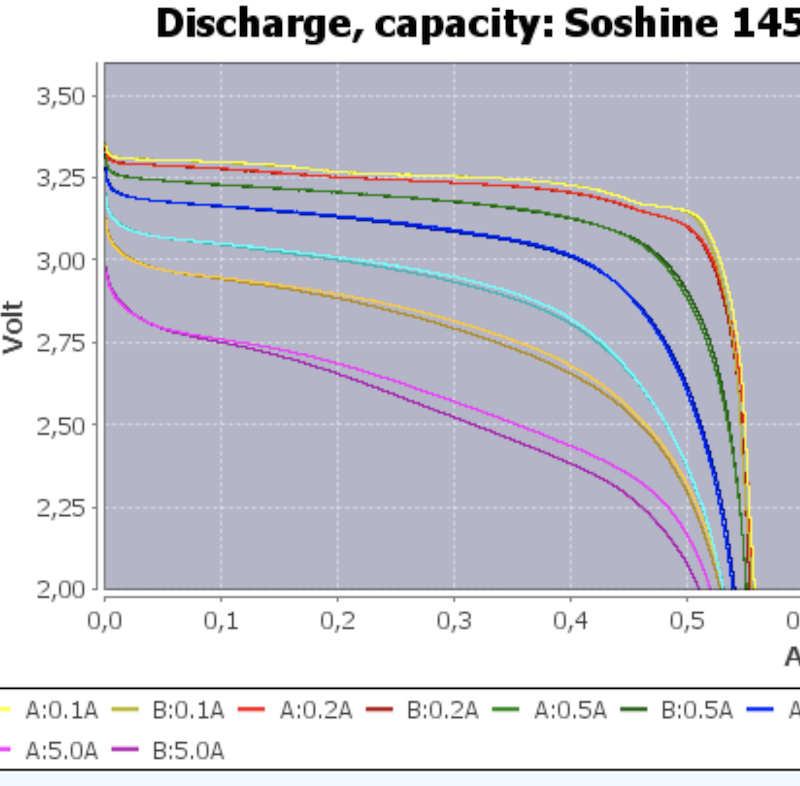The point of this test is to see whether the maximum average amp draw is too high for the LocoFi™ decoder's 1.5 amp rating. The batteries were recharged and rested before the Maximum Average Amp Draw Test. Their resting voltages were: #1 - 3.447, #2 - 3.446, #3 - 3.451, #4 - 3.495. To calculate the maximum average amp draw, the locomotive was run for 6 minutes, 1/10 (0.1) hour. The battery was recharged to obtain the mAh returned to the pack. The capacity, in mAh, is divided by 0.1 hours to yield the current in milliamps (mA). This method provides a slight over estimate of the maximum average amp draw, as the returned mAh capacity noted by a lithium based charger is a bit greater than the actual capacity removed. That's just the way that Lithium chargers work. The charger's returned mAh is noted below for each of the four batteries, along with a bit of explanation. Maximum Average Amp Draw Test Results
Derived Run Time Test
That didn't go so well. The plan was to stop at about 2.9V under load, but the discharge obviously hit the infamous LiFePO4 discharge "cliff". I could not find a graph for a LFP 10440 battery, but this graph for an IFR 14500 (AA size) LiFe battery illustrates the point about having a "cliff" and not a discharge knee. (Note that there are four terms used in this sentence that denote a LiFePO4 battery.)  Battery #3 was at the lowest open circuit voltage, 2.404V, after a short rest while I picked up stuff and got the phone shut off, so it immediately went on the GT500 to charge. Generally LFP batteries are quite rugged and tolerant, but only time will tell if I caused irreversible damage to that battery. I should have realized that the locomotive was actually moving slower during the 4th 10 minute run, but the speed shown on the speedometer still read just under 40 mph, as it did through the whole run. I had hoped that it would go down, but the speed seems to be "tied" to the throttle setting during configuration, and not the incoming voltage. (This was confirmed by the LocoFi™ Team.) Lesson learned. The Returned charger mAh after the Derived Run Time Procedure was performed. The battery's charge order was from lowest open circuit voltage, at the time, to the highest. The open circuit voltage is noted before the charger's returned mAh. These are not the stabilized resting voltage. #3 2.404V, 253mAh
I can only charge one battery at a time using the GT500, as it is set up. Each of the charges took approximately one hour. The resting voltage goes up mostly because each individual battery had not reached its stabilized, resting voltage. Because of the very "flat" discharge curve, trying to use loaded voltage to determine when to stop discharging is difficult. |